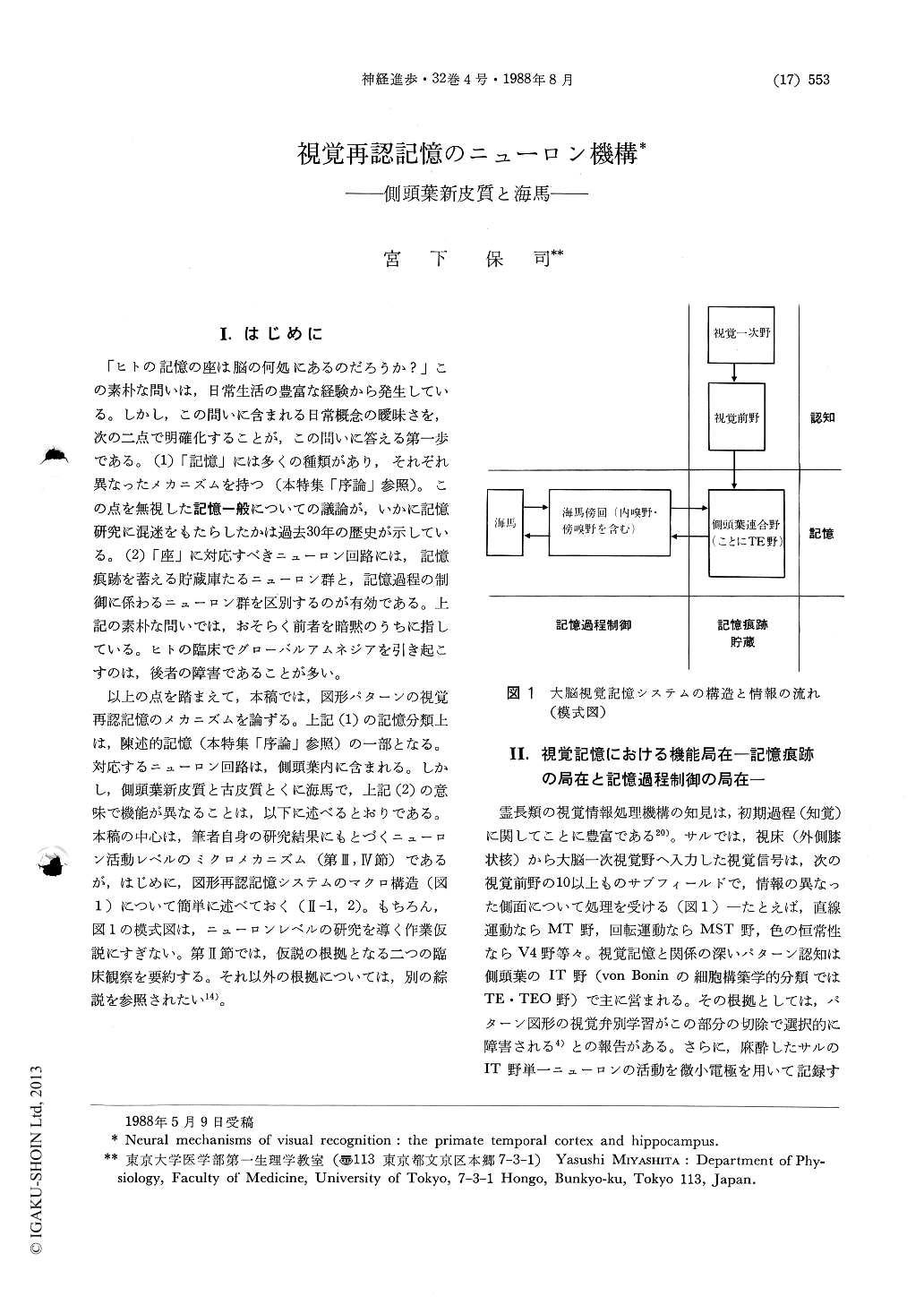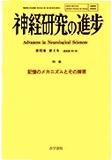Japanese
English
- 有料閲覧
- Abstract 文献概要
- 1ページ目 Look Inside
I.はじめに
「ヒトの記憶の座は脳の何処にあるのだろうか?」この素朴な問いは,日常生活の豊富な経験から発生している。しかし,この問いに含まれる日常概念の曖昧さを,次の二点で明確化することが,この問いに答える第一歩である。(1)「記憶」には多くの種類があり,それぞれ異なったメカニズムを持つ(本特集「序論」参照)。この点を無視した記憶一般についての議論が,いかに記憶研究に混迷をもたらしたかは過去30年の歴史が示している。(2)「座」に対応すべきニューロン回路には,記憶痕跡を蓄える貯蔵庫たるニューロン群と,記憶過程の制御に係わるニューロン群を区別するのが有効である。上記の素朴な問いでは,おそらく前者を暗黙のうちに指している。ヒトの臨床でグローバルアムネジアを引き起こすのは,後者の障害であることが多い。
以上の点を踏まえて,本稿では,図形パターンの視覚再認記憶のメカニズムを論ずる。上記(1)の記憶分類上は,陳述的記憶(本特集「序論」参照)の一部となる。対応するニューロン回路は,側頭葉内に含まれる。しかし,側頭葉新皮質と古皮質とくに海馬で,上記(2)の意味で機能が異なることは,以下に述べるとおりである。本稿の中心は,筆者自身の研究結果にもとづくニューロン活動レベルのミクロメカニズム(第III,IV節)であるが,はじめに,図形再認記憶システムのマクロ構造(図1)について簡単に述べておく(II-1,2)。
It has been proposed that visual memory traces are located in the temporal lobes of the cerebral cortex, as electric stimulation of this area in humans results in recall of imagery. Lesions in this area also affect recognition of an object after a delay in both humans and monkeys, indicating a role in visual memory. However, single-unit recordings from the temporal cortex have shown that neuronal responses selective to specific complex objects, including hands and faces, cease soon after the offset of stimulus presentation. These results left it open whether any of theseneurons could serve the memory of complex objects.
In this article, we first summarize behavioral data which suggest differential roles of the temporal neocortex and the hippocampus in visual memory : the storehouse of memory engram and the memory consolidation machinery. Then, we report electrophysiological evidence ; a group of shape-selective neurons in an anterior ventral part of the temporal cortex of monkeys exhibited sustained activity during the delay period of a visual working memory task. The activity was highly selective for the pictorial information to be memorized and was independent of the physical attributes such as size, orientation, color or position of the object. These observations indicate that the delay activity represents the working memory of categorized percept of a picture. Finally, we describe some preliminary data on the hippocampal and parahippocampal neuronal activity during the learning of visual stimulus-motor response association.

Copyright © 1988, Igaku-Shoin Ltd. All rights reserved.


